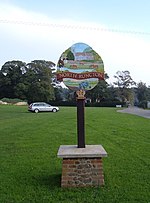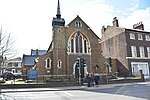West Winch Windmill
Grade II listed buildings in NorfolkGrade II listed windmillsGrinding mills in the United KingdomKing's Lynn and West NorfolkTower mills in the United Kingdom ... and 2 more
Windmills completed in 1821Windmills in Norfolk

West Winch Windmill is located in the village of West Winch in the English county of Norfolk. West Winch is two miles south of King’s Lynn. The mill is a grade II listed building.
Excerpt from the Wikipedia article West Winch Windmill (License: CC BY-SA 3.0, Authors, Images).West Winch Windmill
Millfield Lane, King's Lynn and West Norfolk West Winch
Geographical coordinates (GPS) Address Nearby Places Show on map
Geographical coordinates (GPS)
| Latitude | Longitude |
|---|---|
| N 52.7241 ° | E 0.4141 ° |
Address
Millfield Lane
Millfield Lane
PE33 0LR King's Lynn and West Norfolk, West Winch
England, United Kingdom
Open on Google Maps









